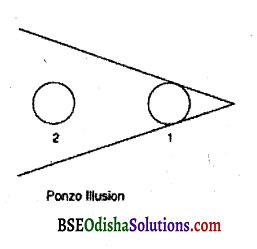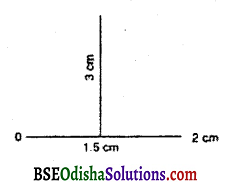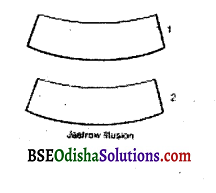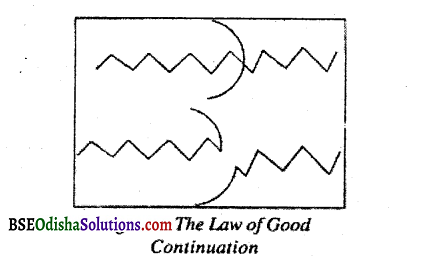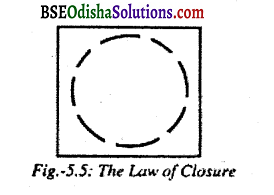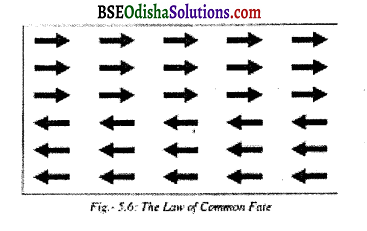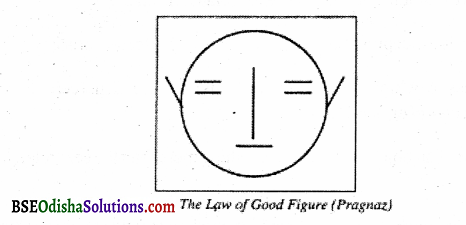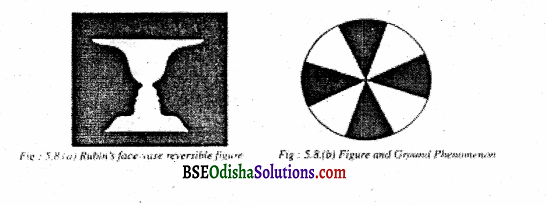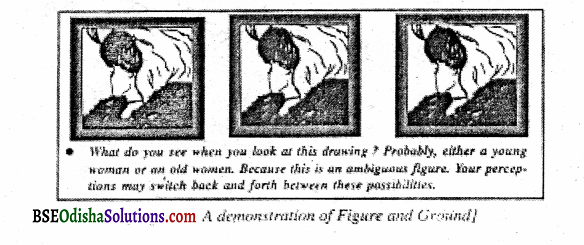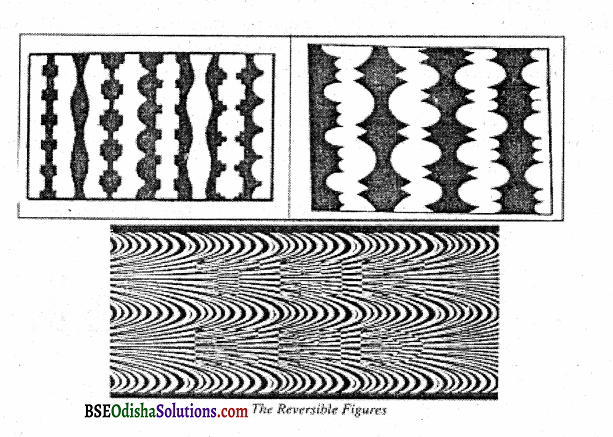Odisha State Board CHSE Odisha Class 11 Foundations of Education Solutions Unit 1 Fundamental of Education Long Answer Questions Part-2.
CHSE Odisha 11th Class Foundations of Education 1 Fundamental of Education Long Answer Questions Part-2
Long Questions With Answers
Question 1.
Discuss the aims of education at the primary level.
Answer:
Primary or Elementary education is not complete in itself, it is just a preparatory stage. It prepares the child for higher education. According to Article-45 of the Indian constitution, free and compulsory elementary education The Committee for Elementary Education Newyork in the report has expected that elementary education should help every child.
- To understand and practice desirable social relationships.
- To discover and develop his own desirable individual attitudes.
- To cultivate the habits of critical thinking.
- To appreciate and desire worthwhile activities.
- To command common integrated knowledge and skills.
The Education Policies and Commission- 1948 have identified the following three major aims of education at the primary level. To develop the basic skills, independence, and intuition for successfully solving the problems. To develop fully all the human and constructive talents of each individual and To develop social responsibilities and cooperate in the improvement of social institutions.
The NCERT in their syllabus for 10 years of schooling has suggested the following major objectives of elementary education. Acquire the tools of formal learning nalnely literary, numeracy, and manual skills. Acquire the habits, and cooperative behavior within the family, school, and community. Develop essential responsibility by inculcating desirable habits.
Appreciate the culture and lifestyle of persons of other religions, regions, and countries. The N.P.E-1986 has also laid much stress on both quantitative and qualitative expansion of elementary education. The policy has given importance to two aspects:
- Universal enrolment and education of pupils up to 14 years of age and
- A substantial improvement in the quality of education.
Question 2.
Discuss the agencies of education with their classifications.
Answer:
Agency means the operation of action of an agent. Generally, the agent is a person who delegates certain power to transact business for another. But in education, it lies its own special meaning. Agencies of education imply those sources, institutional factors, or places that influence the learner.
In other words, the institution, organizations, or sources from where the educand gets learning experiences are called agencies of education. According to B.D. Bhatia, “Society has developed a member of specialized institution to carry out those functions of education. These institutions are known as agencies of education.
Classifications of agencies of education:
Agencies of education may be classified into three types such as:
- formal,
- informal and
- Non-formal.
Formal Agency of Education:
Formal agencies of education are popularly set up by society for various functions of education. In this category, we list those institutions which impart ready-made knowledge in a specified time under a controlled environment. In the formal agency of education, the teachers define and the objectives to be achieved are specific.
Such type of education has its own strengths because the experiences are structured and learning gained can be measured and evaluated. Important examples of formal agencies are schools, colleges, libraries, religious centers, and all cultural organizations.
Informal agency of education:
Informal agency of education are those which influence the child indirectly. It has no formality, formal center of learning, and any rules and regulations. But learning takes place incidentally, accidentally. It is not a preplanned education program. The aims and objectives of these agencies are broad and comprehensive.
Experience gained through informal agencies are either controlled nor rigidly structured. The family, the playground, and community organisations are setup for the child, recreational facilities and professional growth. Education imparted through informal agencies is natural and incidental. Informal agencies provide a natural, beneficial environment for all children.
Non-formal agencies of education:
lt has been observed that a formal system of education can not meet all social and individual needs for instruction, knowledge skills and attitudes. The rigid pattern of formal education is not found suitable for explosion of knowledge and universalisation of primary education. Non-formal education is imparted through organisation and institutions lie inside the formal system.
There are people who are deprived of formal education, the dropouts, housewives, retired pensioners and others interested to enhance their knowledge come to the field of non- formal education. The education can be provided through correspondence courses and television programs, language, laboratory, seminars, workshops, group discussions, study circles.
The Indian Education Commission recommended the growth of a parallel system of non-formal education in the country. So it was intended to develop a non-formal system of education that should be comprehensive and flexible.
![]()
Question 3.
Discuss the function of school as a formal agency of education.
Answer:
The school is an active formal agency of education that plays the role of socialization and transmission of the rich cultural heritage of the country. In the Muslim period we had Maktab and Madrassa and now named as modem school systems. Etymologically school is derived from the Greek word “Skhole” which means leisure, In ancient Greece people enjoyed plenty of leisure and they developed a school system.
Functions of school as an agency of education:
Transmission of knowledge:
School as a formal agency of education aims to prepare students to occupy social roles. The functions of middle and high schools are the transmission of knowledge and skill, and such knowledge and skill are transmitted to the next younger generation.
Transmission of culture:
Besides transmitting knowledge schools transmit culture through the traditions, rules of etiquette, and manners that are taught both by instruction and by example. Most of the schools transmit the culture of their area to the younger generation and schools must train the educates on regional and national culture.
Promotion of culture and development of civilization:
Besides the conservative and transmitting function of school has to promote cultural values in the society. School helps our learners to study and understand other societies and to compare and contrast with our own society. The school is constantly reorganizing and reconstructing learning experiences for the enrichment of culture and the development of civilization.
Promotion of social mobility :
The school is an important center for the promotion of social mobility if aimed at the fulfillment of social justice. It is a place where every social custom and transition is analyzed and evaluated. It helps in the desirable social changes and the new generation learns the defects of customs and traditions and fights for their change and replacement in the wider society.
Provision of intellectual education:
School is known as an intellectual powerhouse that provides information, knowledge, and skill to learners. So intellectual development is possible. By organizing seminars, symposiums, and cultural programs, co-curricular activities schools determine intellectual education. learners.
Provision of physical education:
School is the training ground for physical development where physical training and mental training are imparted. The school organizes physical education programs like N.C.C, N.S.S. boys scout, girls guide, sports, and games for the physical development of the learners.
School helps for spiritual development:
Every day the school organizes a common prayer class which develops a spiritual atmosphere in the school. The school also inculcates in the minds of students the higher values like Satyam Sivam and Sundaram which are otherwise known as truth, beauty, and goodness, help to lead a perfect life.
Development of moral values:
The moral values are imparted by the school through various activities like morning assemblies, prayer, a celebration of religious days, talks by eminent educationists, etc.
Development of the quality of leadership:
School brings the quality of leadership to the pupils. The students participate in the student union, and student council, participate in the union elections and learn the quality of leadership.
Development of National Feelings:
School is the best place in developing nationalist attitudes among learners. The school becomes the place for the realization of materialistic ideals. They observe the national days and develop the idea of national feelings.
School act as an agency of social change and social control:
School as a powerful agent of social change provides instructional, facilities and enables children to understand the complexities of life and adjustment. By imparting moral and intellectual education school refines the behavior of the students. It also trains the students with the principle of a responsible citizens.
Question 4.
Discuss the function of the family as an agency of education.
Answer:
Home or family is the oldest and the most important informal agency of education. It is the foundation of social organization in the world. Family is the original social institution from which all other institutions are developed. It plays a very significant role in the growth and development of a child.
Functions of family or home:
Physical developments:
One of the important functions of the family is to provide favorable opportunities for sound physical development. Home has the responsibility of providing nutritious food, the proper clothing, a nest, sleep, play, physical exercises, medical aid, etc. Parents should also pay attention to the child’s internal and external cleanliness because the child is incapable of attending to those things. Hygienic care includes cleaning the eyes, nose, ears, tongue, and teeth, regular baths, etc. He should be provided with fashionable dresses.
Intellectual developments:
Another function of the family is to provide opportunities for the intellectual development of the child for language development of healthy interests etc. If there is rich intellectual environment in the family, the mental development of the child is speeded up. If the family atmosphere is disruptive then the intellectual development of the child will be obstructed.
Character development:
Another function of the family is to help in the character-building of the child. Family should play an active part in the character development of children. The family lays the foundation of character. Ethical virtue, honesty, truthfulness, industriousness sublimation of instincts are developed in the family. If the family environment is disruptive then the child may develop a weak character.
Emotional developments:
Family is the basis of the emotional development of the child. Parents should give full affection to children so that sense of emotional security may be developed in them. Parents should be sympathetic and they should provide proper solutions to various problems. The children should not be made to feel that they are ignored and rejected children. Parents should have control of their emotions because emotions are caught not taught.
Social developments:
Family plays in the socialization of a child. The child has his first social relationship in the family and acquires many of the social patterns. The younger members were always to obey the elders in the family. The family in India has been the center of social activities,
Cultural development:
Family plays an important role in transmitting the cultural heritage of the society to the child. It makes the child familiar with the customs, conventions, traditions, values, and norms of society. Thus, the function of the family is to maintain the continuity of social life by handling the culture of the society to the child.
Religious and spiritual developments:
Family should pay attention to religion and the spiritual development of children conversant with the life history of religious leaders and religious precepts. It should encourage the children to say their family members worship in the religious shrines and show devotion to God; virtues like the brotherhood of man and fatherhood of God should be developed. love for truth, beauty, and goodness should be cultivated.
Civic functions:
The child learns the first lesson of citizenship between the mother’s kiss and the father’s care, The child learns various civic virtues in the family, which is discharging his duties and responsibilities. It develops in his quality of discipline, cooperation, and tolerance.
![]()
Question 5.
Discuss the Vocational Aims of Education and its merits.
Answer:
The basic need of all men is food, clothing, and shelter. If education does not enable us to provide these basic needs, education on industrialization and mechanization and emphasis are given to vocational education. Different commissions like the Mudaliar commission (1952-53) and the Kothari commission (1964-66) put stress on vocational education. At secondary and higher secondary stages of education.
Emphasis is given to Vocational education, which is known as the ‘bread and butter’ aim of education. It aimed to fulfill his basic needs. Hence, educationists emphasized the vocational aim of education so that he would be able to solve his economic problems without any difficulty. It is the economic self-sufficiency of a person which makes him a worthy and contributing person. So education should prepare the child for a future vocation. Now, the vocational aim of education has become very essential.
Merits of vocational Aims :
The merits of vocational aims of education are as follows :
A person who is trained in vocation develops confidence and self-assurance. He knows that he will not be a drag on society. He feels that he is not a parasite on dependent on others. Vocational education not only benefits the individual but also leads society toward greater prosperity and industrial advancement.
Vocational education is very necessary for school-going children. Such children lose interest when made to perform academic tasks which are beyond their understanding, but they indicate a keen interest in making things and in acquiring manual and physical skills. Vocational schools and Polytechnique schools for such students have proved of immense value in the educational systems all over the world.
Vocational aim results in the creation of more doctors, engineers, and techniques of high caliber who lead their country towards prosperity. There are different trades in vocational education and students after training in these vocational made become self-employed. They can earn their living Unemployment problem can be solved.
Question 6.
Discuss the democratic aims of education.
Answer:
The political system in a country is reflected in its educational system. It means democracy can never be successful without education. Whenever democracy becomes unsuccessful it has been because of education. In a democracy, the government is composed of the elected representatives of the people and if the people are uneducated they can never elect to right leader.
We cannot hope that good democracy educated people. Democratic government demands educated people education can generate and instill the qualities that democracy demands. The aim of the state is to achieve the highest moral level and this can be reached through education alone. Democracy aim at the all-round development of personality.
The success of a democratic society also depends upon mature men and women. A mature personality has gone through physical, mental, social, ethical, and spiritual development. Hence, education should aim at the development of all aspects of personality through various kinds of training. Education in a democracy must create a democratic personality.
It discovers his potential and enables them to realize and utilize the facilities provided to the individuals. It must equip the individual with the power of Judgement and scientific thinking The secondary education commission has remarked that democracy aim to develop some vocational skills in education. No nation can progress in the absence of economic development.
The first and foremost duty of the state is to provide a system and means of education which imparts some vocational skills to education so that they can earn their livelihood as well as they can contribute to the nation’s economic prosperity. The success of democracy depends largely upon the people’s awareness of their rights and duties and the extent to which people fulfill their responsibilities.
Education aims at developing this ability in people. Democracy aims at inculcating the individual spirit of tolerance. The individual’s personality and emotional balance are needed. The important aim of education is to develop leadership. The source of democracy depends on the capabilities of the leadership.
In a decentralized government, there is a need for skilled leadership at different levels of administration. Democratic government run by the elected representatives of the people needs expert leadership for the development and progress in every sphere of political, economic, social, scientific, and cultural. Education should aim at evolving such leadership because without doing this, education cannot make any contribution to democracy.
![]()
Question 7.
Discuss the functions of education towards the individual.
Answer:
Education performs various functions for the individual and towards society named individual and social functions of education.
Functions of education towards individual:
Education as integrated growth:
During infancy and childhood, a human child is like an animal and very often behaves like an animal. Education is a process that is deliberately planned to train the child to lead a group life and to adjust to the human environment. It refines and culturizes the child. Redden says, “Education is deliberate and systematic influence, exerted by a mature person upon the immature through instruction, discipline and harmonious development of physical, intellectual, aesthetic, social and spiritual powers of the human being according to individual and social needs.
Thus a child receives education according to his own needs and the needs of society. Education is a process of growth in which the individual is helped to develop his talents, powers, interests, and ambitions. The growth takes place in the directions of physical, mental, social, moral, and intellectual. Growth in direction stimulates another dimension. For example, physical growth physically affects social, moral, and intellectual growth.
Education as Direction:
Each child is born with innate powers. The environment in which the child lives stimulates him for activities. If the child acts according to the stimulus provided by his physical and social environment a lot of energy is wasted. He fails to proceed in the right direction. Here education can be used, as a device to help the child to proceed in the right direction to achieve the objectives in life. Therefore, much wastage can be saved and the child’s activity can be properly directed towards the desired objective.
Education is a preparation for adult life :
A child of today is a citizen of tomorrow. So, it is the chief function of education to prepare a child for his future life. In other words, education should create such abilities and capacities in the child that as he grows older he is able to face all the problems of life courageously. As a result of which, he will not be a misfit in society and a failure in life.
Education is not to be book centered :
The educators are of the opinion that education should not be book centered. It is to be child-centered. The book is for the child and not the child for the book. The educative process should be based on the findings of child psychology. The nature of the child is to be respected. He is needs and interests process must revolve around the child. The child himself is a book that the teacher should read from page to page.
Education aims at the Harmonious development of Individuals :
According to some eminent educators, the function of education is to look at the harmonious development of the individual. A balance should be kept between knowing, doing, and feeling No one-sided development is to be advocated. Let the child be a scholar an artist and a sportsman in one. He should learn the skill as well as pick up knowledge to appreciate that skill. Emphasis on one to the neglect of the other aspect of his growth is tantamount to miseducation.
Knowledge should be treated as synthetic:
While imparting instructions to the children, the function of the teacher is to provide knowledge in a synthetic manner. It should not come in water-tight compartments. Different subjects should be correlated as far as possible among themselves and also with life beyond and school. Nothing is to be imparted in abstractions and school life is not to be isolated from life outside. Let the child be educated in a natural way by following a purposeful activity. The child is not to be taught in fragments but through well-organized experiences.
Education should help with individual adjustments :
A child is a bom in a social environment and its existence depends on how it can adjust itself to the forces of the environment. Man can adjust himself to the environment with the help of education. The long period of infancy gives an opportunity for the child to adjust itself to the environment.
Education not only helps a man in adjusting himself to the environment, but it also helps him in controlling or changing the environment. Environment means physical, social, and mental environment. The man introduces changes in his behavior by means of education. Thus education helps individuals adjust.
Question 8.
Discuss the function of education towards the society or social aims of education.
Answer:
The function of education towards society are as follows :
Education as a social process :
Through education, the child is able to develop reasoning in social relations, cultivate social virtues and the child becomes socially efficient. He develops social awareness. Education is the fundamental method of social progress and individual upliftment. Social construction takes place in the adjustment through education. Through education, society can formulate its own purpose can organize its own means and resources.
School as a mini-society :
The school as a society in miniature provides varied experiences to the child. A school is a place of training that provides ample experiences of life. Activities leading to the child’s emotional aesthetic intellectual and physical development must find an equal emphasis in the school. The school engages the child in vocations as he likes.
Social conservation :
Social education is necessary for a child. Society guarantees the safety of man’s life end prosperity. Man realizes social existence through education. Man learns the value of cooperation with social life by means of education. The social experiences of one generation are preserved for generations to come through the medium of education.
Education as continuous Reconstruction and integration of activities and experiences :
To John Dewey, Education is the process of living through a continuous reconstruction of experience. It is the development of all those capacities in the individual which will enable him to control his environment and fulfill his possibilities. The true function of education is progressive development and enrichment of the child’s experience and enrichment of his own native powers.
The experience of an individual is continuous. The subject matter we teach in school such as history, mathematics, literature, etc. are important as means but not ends. They become meaningful only when they enter an activity into social life. Thus education according to Dewey, the process of construction or reconstruction of experience giving it more socialized.
Every generation inherits experiences from its past generation the experience are modified and individual reconstructs new experiences. His activities undergo changes. The experience gets revised and reorganized.
![]()
Question 9.
What is community? How did it find? Give the function of the community towards education.
Answer:
The word community is derived from two distinct words ‘com’ and ‘munis’ means togetherness and munis meaning to serve together. A community is formed with a population aggregate having a historical heritage. The common mode of lie common religion a community is formed to Alvin good. A community is a social contact group occupying a definite area. The community is an informal agency of education that influences its children in many ways.
Functions of community:
To develop socialization :
Every community socialization its member directly by organizing different fairs, festivals, and other religious ceremonies. From these institutions and occurrences, children learn the social customs, traditions, and edicts in a natural way. They also develop the values their sympathy, cooperation, social service, sacrifice social adjustment, and tolerance and leam the importance of rights and duties in life.
To develop cultural values :
Cultures refer to a common way of life. Led by the people of a particular community of a country. Each community has its own culture. Right education lay children to imitate the culture of the won community this knowledge of cultural development must be tested on language, pronunciation, and behavior.
To develop democratic values :
In order to develop and inculcate democratic values in the minds of the children the community organizes meetings and conferences in which great political leaders and social organizers participate. The children gain knowledge about political activities that going on and leam the value of democracy in life.
To develop physical health :
A community environment contributes a lot towards the health and physical development of children. So each community establishes hospitals with the help of its community people. It also builds parks, gardens, and playgrounds for the physical growth of the children. Thus, all communities whether Hindu or Muslim or Christian contribute a lot for the protection and health of children.
To develop mental health :
To help children with their mental growth some communities organize library reading rooms, symposiums, exhibitions, small conferences, literacy and artistic activities, etc.
To develop vocational education:
The community works as the first school of vocational development. People of a particular community are engaged in various vocations. Children initiate their activities, and vocations and choose these for their future life. They also develop efficiency. It is called apprenticeship training at home.
Impact of moral development :
The children follow moral principles and ethics from their own religions. Childhood is a period of imitation. If the environment of a community is bad, children will imitate bad habits. If it is a good and wholesome environment, a community will help children with their moral upliftment. The community acts in the habit formation of children and there is moral development possible.
Impact of different agencies of the community :
The different agencies influence the life and activities of the people as well as children. These include cinema, TV, radio, zoo, museum, libraries, newspapers, magazines, etc from these agencies children receive education in different branches.
Provision to all types of education :
Each community makes necessary arrangements to provide free, compulsory and universal education to all children of 6-14 age groups. Illiteracy and ignorance can be eradicated from the country.
The problem of equal opportunities for all :
It is the responsibility of the community to provide equal opportunity for all the child and all fields of education. No discrimination should be made and no restriction should be imposed by the community on the basis of caste, creed, color, sex or religion.
Question 10.
Explain the function of Paus as an agency of education. Explain as informal press media.
Answer:
The process is another outstanding passive agency of education. In the modem world, it has developed into a social institution reading is a valuable experience. Its value, in the modification behavior, is hot so much realized in this country because it is mostly confined to classrooms, where there is very little relation between the interests of the readers and the material read.
But its reading material is related to the experience of the reader, it exerts great influence in modifying his behavior. Every civilized nation spends more and more money on the production of such materials. The influence of the press in modifying behavior is recognized by the importance which is attached to the opinions expressed in the press in regard to any matter.
Many social movements have become of national significance through the consistent campaign of the press. Francis K. Brown writes, Books and magazines even come are a vital function in determining attitudes / sometimes during so directly more after the start given to the news or through entertainment as in books and magazines.
![]()
Question 11.
Explain cinema as an agency of education.
Answer:
In present-day society, cinema has become very popular. In the field of education is rendered invaluable service. The chief advantage of the cine film over other, optical devices is its portrayal of movements end their photographic control by which a very slow growth process may be accelerated to be depicted within a very short time.
E.g. the life history of a mosquito or the growth of a plant or the action may be slowed down to show the detail is for minute observation e.g. use of limbs in swimming or how to play cricket, etc. The film provides information in a very alternative and realistic manner. E.g. screening documentary films or news reels.
The symbolic realism of the screen great economic learning process. These films may be of historical, geographical, literary, scientific, or informational value. The cinema is an effective instrument for influencing human behavior because of the reasons stated below. The Cinema enjoys great social prestige and hence suggestions from them often have great influence.
It depicts the sublimated story of human experience and emotions and portrays by word, action, and color, the love, and fear, joys, and sorrows, which all human beings have felt, but which they fail to express An unlimited variety of human experiences is portrayed in a moving panorama.
Cinemas, thus, succeed in developing and capturing the spontaneous interest of the audience which is so essential in causing learning. Producers can manipulate human experiences according to their own purpose and this secures the desired modification of behavior in the audience.
Experimental studies have revealed that cinema modifies the behavior patterns of individuals and influences groups’ standards of conduct. But they are unfortunately dominated by commercial interests. Their objective is only to make money and very often they lower their standards so as to play to the gallery.
Thus the educative influence of the cinema, to a great extent, may be regarded as a negative at the present moment. There should be more planned use of the cinema with higher objectives. Documentary and educational films should be carefully prepared even though they might have meanless profits. Such attempts to infect should be subsidized by the state.
![]()
Question 12.
Explain the function of radio as an agency of education.
Answer:
As an agency of education radio plays a very important role. Children in schools need to be informed faster and more fully about the subject that is taught. The radio very well serves this purpose. It gives an opportunity to the pupils to listen to subject experts, historians, authors, and first-rate teachers.
It promotes in children and teachers alike a deeper and wider understanding of themselves, and their surroundings and gives them habits of observation. It prevents an integrated picture and idea contained in the topic. A good school broadcast can give the teacher, through its subject matter, the freshness of its presentation and the new technique of studio production.
It offers immense scope for the economic effectiveness of teaching efforts. One of the most significant aspects of broadcast is that it combines the qualities of both speech and writing. The radio uses expression and sentence structure which are more easily comprehensible. Being primarily concerned with the spoken word the radio breathes life into the dead words of written materials.
No doubt, the listener does not see the speaker in his physical form. But the voice has a way of conveying the impression of personality from the voice the listener observes whether the speaker is serious or not while delivering the topic of different subjects. Many people fear end suspect that the school broadcast does not follow the syllabus of the different subjects fully.
But the syllabus is not the end in itself. It is a means to enable the students to know more and to grow to fullness. They give certain skill and after them disciplines, so whether the school broadcast program strictly follows the syllabus, topic by topic, or not, they provide some new information, rearrange the content in a new pattern, and enables the students to see the events in a clear perspective.
In fact, the school broadcasts, can in the hands of a thoughtful teacher become a labor-saving and time-saving device. It helps to correlate. Therefore, radio programs for schools should not be subject-centered. They should rather be life centered. They should at any rate set up standards & of speech and performance for students and teachers alike.
If the teachers keep in contact with the school broadcast programs they can make the subject interesting. Therefore, the school broadcast program should be considered an important agency of education. The radio is not a luxury today. It is an educational necessity. The children should be trained not only to hear the broadcast but also to listen to it. The radio can contribute much towards the education of not only children but the nation as a whole through its wide dissemination of knowledge and information and training for future citizenship.



